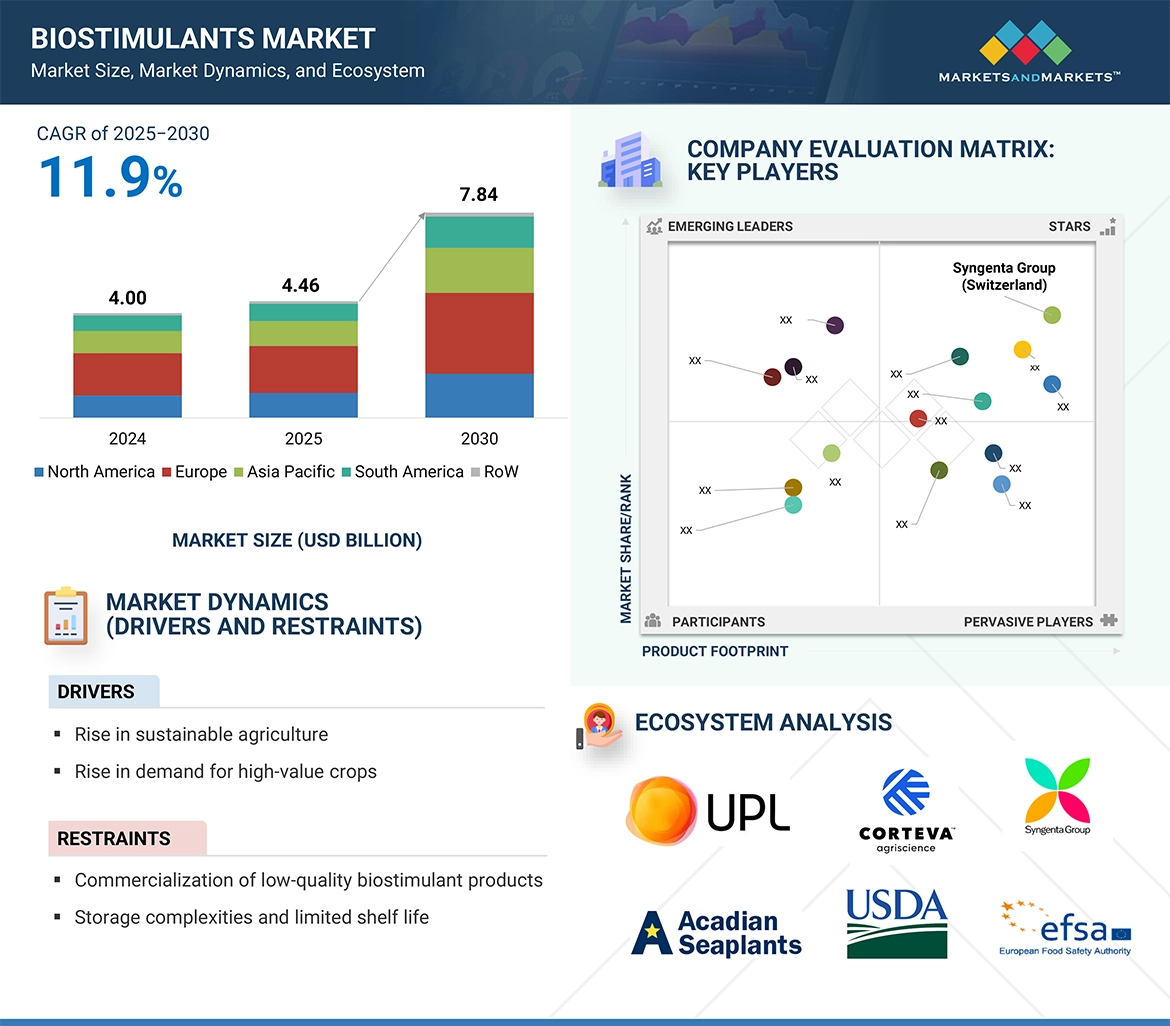
In an era of climate change, soil degradation, and increasing demand for sustainable food production, the biostimulants market is emerging as a vital contributor to global agriculture. Farmers, agribusinesses, and policymakers alike are turning to biostimulants as innovative solutions to boost crop yields, improve soil health, and reduce dependency on synthetic inputs—all while aligning with eco-friendly farming practices.
What Are Biostimulants?
Biostimulants are natural or biologically derived substances and microorganisms that enhance plant growth, nutrient efficiency, tolerance to abiotic stress (such as drought or salinity), and overall crop quality. They include:
- Humic and fulvic acids
- Seaweed extracts
- Amino acids and peptides
- Microbial inoculants (such as beneficial fungi and bacteria)
- Other plant extracts and compounds
Unlike fertilizers, which add nutrients to the soil, biostimulants work by stimulating the plant’s natural processes, helping it to better utilize existing nutrients and withstand challenging conditions.
The global biostimulants market is estimated at USD 4.46 billion in 2025 and is projected to reach USD 7.84 billion by 2030, at a CAGR of 11.9% from 2025 to 2030.

Biostimulants Market Growth and Trends
According to industry reports, the global biostimulants market is projected to grow significantly in the coming years, driven by several key trends:
- Rising Demand for Sustainable Agriculture: Consumers are increasingly concerned about food safety and environmental impacts, pushing farmers toward greener, more sustainable production methods.
- Government Support & Regulatory Approvals: Regulatory bodies in Europe, North America, and Asia-Pacific are recognizing the benefits of biostimulants, resulting in clearer definitions and supportive frameworks that encourage wider adoption.
- Technological Innovations: Advances in microbiology, plant sciences, and formulation technologies are creating more effective and specialized biostimulant products tailored for specific crops and climates.
- Growing Organic Farming Sector: The rapid expansion of organic agriculture is fueling demand for biostimulants, which fit well within organic production standards.
Benefits of Biostimulants
- Enhanced Crop Yields: By promoting nutrient uptake and boosting plant metabolism, biostimulants contribute to higher and more consistent yields.
- Improved Stress Tolerance: They help plants cope with abiotic stressors such as drought, heat, cold, and salinity, which are becoming more frequent due to climate change.
- Better Soil Health: Biostimulants can improve soil structure and microbial activity, leading to long-term improvements in soil fertility.
- Reduced Environmental Impact: Lower reliance on synthetic fertilizers and pesticides results in reduced runoff, pollution, and carbon emissions.
Biostimulants Market Opportunities
- Product Innovation: Development of new biostimulant formulations, including microbial biostimulants and biofertilizers, offers growth potential.
- Expansion in Emerging Markets: Growth in Asia Pacific and Latin America is expected to outpace other regions, driven by government initiatives and agricultural modernization.
- Partnerships and Investments: Collaborations between agri-tech companies, research institutions, and farmers can accelerate adoption and market penetration.
- Regulatory Advocacy: Organizations like the European Biostimulants Industry Council (EBIC) are working to create a more favorable regulatory environment, which will further stimulate market growth.
Key Questions Addressed by the Biostimulants Market Report:
- What are biostimulants?
- What was the global biostimulants market size in 2024?
- What is the projected growth rate of the biostimulants market?
- Which region dominates the biostimulants market?
- What are the key drivers of market growth?
- What types of crops use biostimulants?
- What are the main types of biostimulants?
- Who are the key players in the biostimulants market?
- How do biostimulants benefit agriculture?
- Are biostimulants considered biofertilizers?
- What regulatory environment affects the biostimulants market?
- How do biostimulants contribute to sustainable agriculture?

